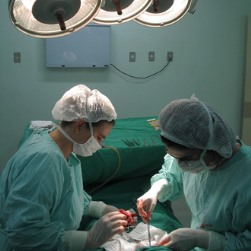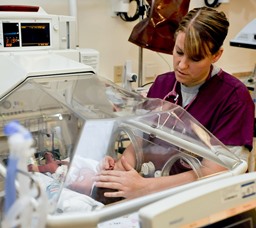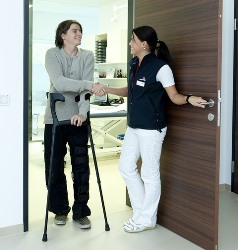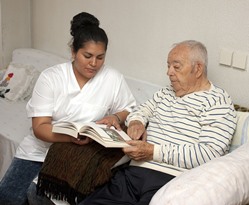How to Pick a Nursing Program near Springfield South Dakota
 Locating the right nursing school near Springfield SD may feel like a complicated project, particularly if you aren’t sure what to search for in a good degree program. As you may presently know, for you to practice as a registered nurse, you must obtain the appropriate education and training to become licensed. So it is essential that you research and measure the qualifications of each college you are thinking about before enrolling in your final choice. Unfortunately, too many potential students base their decision solely on the cost of tuition and the distance of the school. Deciding on the least expensive college or the one that is local to your residence is no doubt not the most reliable way to pick a nursing program. There are a number of key additional things to look into before you make a decision where to attend classes. But before we explore that checklist, let’s first discuss what the role of a registered nurse is in our healthcare system, as well as the nursing degree options that are offered.
Locating the right nursing school near Springfield SD may feel like a complicated project, particularly if you aren’t sure what to search for in a good degree program. As you may presently know, for you to practice as a registered nurse, you must obtain the appropriate education and training to become licensed. So it is essential that you research and measure the qualifications of each college you are thinking about before enrolling in your final choice. Unfortunately, too many potential students base their decision solely on the cost of tuition and the distance of the school. Deciding on the least expensive college or the one that is local to your residence is no doubt not the most reliable way to pick a nursing program. There are a number of key additional things to look into before you make a decision where to attend classes. But before we explore that checklist, let’s first discuss what the role of a registered nurse is in our healthcare system, as well as the nursing degree options that are offered.
Registered Nurse Job Responsibilities
 Registered nurses are the primary occupation in the medical delivery system. RNs practice in a large number of different medical environments, such as Springfield SD hospitals, family practices, outpatient clinics, nursing homes and even schools. Their basic role is to aid doctors in the treatment of their patients. Having said that, the exact duties of a registered nurse will depend on their job or area of expertise along with where they work. A few of the functions of an RN may include:
Registered nurses are the primary occupation in the medical delivery system. RNs practice in a large number of different medical environments, such as Springfield SD hospitals, family practices, outpatient clinics, nursing homes and even schools. Their basic role is to aid doctors in the treatment of their patients. Having said that, the exact duties of a registered nurse will depend on their job or area of expertise along with where they work. A few of the functions of an RN may include:
- Administering medications
- Overseeing patients
- Performing physical examinations
- Managing care
- Managing LPNs, LVNs and nurse aides
- Instructing patients and their families
- Taking care of health records and charts
Nurses with a more advanced degree may have more advanced job duties and responsibilities. Nurse practitioners (NP), as an example, must hold a Master’s Degree and normally work more independently than their RN counterparts. They can administer primary or specialty care services, prescribe medications, and diagnose and treat routine illnesses or injuries.
Nursing Degrees Available
There are several degree options offered to become a registered nurse. And to become an RN, a student must enroll in an accredited school and program. A student can obtain a qualifying degree in just 2 years, or advance to attain a graduate degree for a total of 6 years. Following are some brief descriptions of the nursing degrees that are available in the Springfield SD area.
- Associates. The Associate Degree in Nursing (ADN) is usually a 2 year program offered by community colleges. It preps graduates for an entry level job in nursing in healthcare facilities such as hospitals, clinics or nursing homes. Many use the ADN as an entry into nursing and ultimately obtain a more advanced degree.
- Bachelor’s. The Bachelor of Science in Nursing (BSN) supplies more expansive training than the ADN. It is typically a 4 year program offered at colleges and universities. Licensed RNs may be eligible to complete an accelerated program based on their past training or degree and professional experience (RN to BSN). Those applying to the program may want to advance to a clinical or administrative position, or be more competitive in the employment market.
- Master’s. The Master of Science in Nursing (MSN) is normally a 2 year program after achieving the BSN. The MSN program offers specialization training, for example to become a nurse practitioner or concentrate on administration, management or teaching.
When a graduating student has obtained one of the above degrees, she or he must pass the National Council Licensure Examination for Registered Nurses (NCLEX-RN) in order to become licensed. Other requirements for licensing vary from state to state, so be sure to contact the South Dakota board of nursing for any state mandates.
LVN and LPN Programs
 There are essentially two academic credentials available that provide training to become either an LPN or an LVN. The one that can be finished in the shortest period of time, usually about one year, is the certificate or diploma program. The second option is to attain a Practical Nursing Associate Degree. These programs are broader in nature than the diploma alternative and commonly require 2 years to complete. The benefit of Associate Degrees, besides providing a higher credential and more extensive instruction, are that they provide more transferable credit toward a Bachelor’s Degree in nursing. Regardless of the kind of credential you seek, it should be South Dakota approved and accredited by the National League for Nursing Accrediting Commission (NLNAC) or any other national accrediting organization. The NLNAC attests that the core curriculum properly prepares students to become Practical Nurses, and that most graduates pass the 50 state required NCLEX-PN licensing exam.
There are essentially two academic credentials available that provide training to become either an LPN or an LVN. The one that can be finished in the shortest period of time, usually about one year, is the certificate or diploma program. The second option is to attain a Practical Nursing Associate Degree. These programs are broader in nature than the diploma alternative and commonly require 2 years to complete. The benefit of Associate Degrees, besides providing a higher credential and more extensive instruction, are that they provide more transferable credit toward a Bachelor’s Degree in nursing. Regardless of the kind of credential you seek, it should be South Dakota approved and accredited by the National League for Nursing Accrediting Commission (NLNAC) or any other national accrediting organization. The NLNAC attests that the core curriculum properly prepares students to become Practical Nurses, and that most graduates pass the 50 state required NCLEX-PN licensing exam.
CNA Training
Unlike other licensed nurses, certified nursing assistants do not have to obtain a college degree. CNA instruction can be received at Springfield SD area community colleges or at vocational or trade schools. The length of the training can take anywhere from just one to 3 months, leading to either a certificate or a diploma. Under the 1987 Nursing Home Reform Act, students are mandated to receive at least 75 hours of instruction, 16 of which must be clinical or “hands-on” training hours. Keep in mind that this is the minimal amount of instruction required and every state has its specific prerequisites. So it’s crucial to make sure that the program you enroll in not only satisfies the federal requirements, but also those for South Dakota or the state where you will be practicing. One recommendation is to check with the health or nursing board for your state to make sure that the education is state certified. In addition to the training, each state requires a passing score on a competency test for certification. Depending on the state, there might be other requirements as well.
What to Ask Nursing Colleges
 Once you have determined which nursing degree to enroll in, as well as whether to attend your classes on campus near Springfield SD or online, you can use the following pointers to start narrowing down your options. As you undoubtedly realize, there are numerous nursing schools and colleges within South Dakota and the United States. So it is necessary to lower the number of schools to choose from so that you will have a manageable list. As we earlier pointed out, the location of the school along with the cost of tuition are most likely going to be the initial two things that you will take into consideration. But as we also emphasized, they should not be your sole qualifiers. So prior to making your ultimate selection, use the following questions to see how your selection measures up to the other schools.
Once you have determined which nursing degree to enroll in, as well as whether to attend your classes on campus near Springfield SD or online, you can use the following pointers to start narrowing down your options. As you undoubtedly realize, there are numerous nursing schools and colleges within South Dakota and the United States. So it is necessary to lower the number of schools to choose from so that you will have a manageable list. As we earlier pointed out, the location of the school along with the cost of tuition are most likely going to be the initial two things that you will take into consideration. But as we also emphasized, they should not be your sole qualifiers. So prior to making your ultimate selection, use the following questions to see how your selection measures up to the other schools.
- Accreditation. It’s a good idea to make sure that the degree or certificate program as well as the school is accredited by a U.S. Department of Education acknowledged accrediting organization. Aside from helping make sure that you get a quality education, it may help in securing financial aid or student loans, which are frequently not available in Springfield SD for non-accredited schools.
- Licensing Preparation. Licensing prerequisites for registered nurses vary from state to state. In all states, a passing score is required on the National Council Licensure Examination (NCLEX-RN) as well as graduation from an accredited school. Many states require a certain number of clinical hours be completed, as well as the passing of additional tests. It’s important that the school you are attending not only delivers an excellent education, but also preps you to satisfy the minimum licensing standards for South Dakota or the state where you will be practicing.
- Reputation. Check online rating companies to see what the reviews are for each of the schools you are considering. Ask the accrediting agencies for their reviews as well. Also, get in touch with the South Dakota school licensing authority to find out if there are any complaints or compliance issues. Finally, you can call some Springfield SD healthcare organizations you’re interested in working for after graduation and ask what their assessments are of the schools as well.
- Graduation and Job Placement Rates. Find out from the RN programs you are looking at what their graduation rates are as well as how long on average it takes students to complete their programs. A low graduation rate may be an indication that students were dissatisfied with the program and dropped out. It’s also imperative that the schools have high job placement rates. A high rate will not only verify that the school has a good reputation within the Springfield SD healthcare community, but that it also has the network of contacts to help students gain employment.
- Internship Programs. The most effective way to acquire experience as a registered nurse is to work in a clinical setting. Virtually all nursing degree programs require a specified number of clinical hours be completed. Various states have minimum clinical hour prerequisites for licensing as well. Check if the schools have a working relationship with Springfield SD hospitals, clinics or labs and assist with the placement of students in internships.
Online Nursing Classes
 Attending nursing programs online is emerging as a more preferred way to obtain training and attain a nursing degree. Certain schools will require attendance on campus for part of the training, and virtually all programs require a specified amount of clinical rotation hours completed in a local healthcare facility. But since the remainder of the training may be accessed online, this method may be a more convenient solution to finding the time to attend school for many Springfield SD students. Concerning tuition, many online degree programs are less expensive than other on campus alternatives. Even other expenses such as for commuting and study materials can be lessened, helping to make education more easily affordable. And a large number of online programs are accredited by organizations such as the Commission on Collegiate Nursing Education (CCNE) for BSN and MSN degrees. Therefore if your work and family obligations have left you with very little time to work toward your academic goals, perhaps an online nursing school will make it easier to fit a degree into your active schedule.
Attending nursing programs online is emerging as a more preferred way to obtain training and attain a nursing degree. Certain schools will require attendance on campus for part of the training, and virtually all programs require a specified amount of clinical rotation hours completed in a local healthcare facility. But since the remainder of the training may be accessed online, this method may be a more convenient solution to finding the time to attend school for many Springfield SD students. Concerning tuition, many online degree programs are less expensive than other on campus alternatives. Even other expenses such as for commuting and study materials can be lessened, helping to make education more easily affordable. And a large number of online programs are accredited by organizations such as the Commission on Collegiate Nursing Education (CCNE) for BSN and MSN degrees. Therefore if your work and family obligations have left you with very little time to work toward your academic goals, perhaps an online nursing school will make it easier to fit a degree into your active schedule.
Attending a Nursing School near Springfield SD?
Perhaps you have already made your decision to attend a Nursing Program in the greater Springfield South Dakota area. If that is the case, then the following information may prove to be both educational and useful regarding the location of your future Alma Mater.
Springfield, South Dakota
As of the census[3] of 2010, there were 1,989 people, 352 households, and 200 families residing in the city. The population density was 1,969.3 inhabitants per square mile (760.4/km2). There were 433 housing units at an average density of 428.7 per square mile (165.5/km2). The racial makeup of the city was 70.7% White, 2.9% African American, 23.3% Native American, 0.1% Asian, 0.6% from other races, and 2.4% from two or more races. Hispanic or Latino of any race were 3.7% of the population.
There were 352 households of which 22.7% had children under the age of 18 living with them, 46.9% were married couples living together, 7.4% had a female householder with no husband present, 2.6% had a male householder with no wife present, and 43.2% were non-families. 41.2% of all households were made up of individuals and 21% had someone living alone who was 65 years of age or older. The average household size was 2.00 and the average family size was 2.66.
The median age in the city was 37 years. 8.8% of residents were under the age of 18; 13.3% were between the ages of 18 and 24; 42.2% were from 25 to 44; 25.1% were from 45 to 64; and 10.6% were 65 years of age or older. The gender makeup of the city was 81.1% male and 18.9% female.
Enroll in the Right Nursing School near Springfield SD
 Picking the ideal registered nursing program is perhaps the most critical phase to beginning a new career in the healthcare field. There are numerous aspects that you need to think about when choosing a nursing school. These factors will be prioritized differently depending on your existing career objectives, obligations, and economic status. As we have emphasized in this post, it is essential that you select an RN school and a degree program that are each accredited and have outstanding reputations within the healthcare community. By utilizing our checklist of qualifying questions, you will be able to produce a shortlist of schools to select from so that you can make your final selection. And with the proper degree and training, combined with your dedication and desire to succeed, you can become a licensed registered nurse in Springfield SD.
Picking the ideal registered nursing program is perhaps the most critical phase to beginning a new career in the healthcare field. There are numerous aspects that you need to think about when choosing a nursing school. These factors will be prioritized differently depending on your existing career objectives, obligations, and economic status. As we have emphasized in this post, it is essential that you select an RN school and a degree program that are each accredited and have outstanding reputations within the healthcare community. By utilizing our checklist of qualifying questions, you will be able to produce a shortlist of schools to select from so that you can make your final selection. And with the proper degree and training, combined with your dedication and desire to succeed, you can become a licensed registered nurse in Springfield SD.
More Awesome Locations in South Dakota
